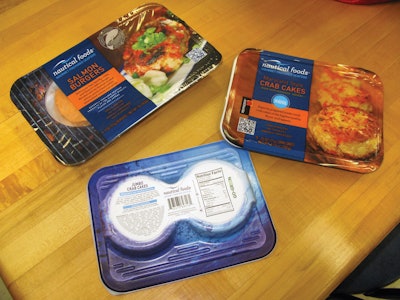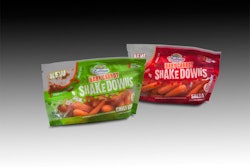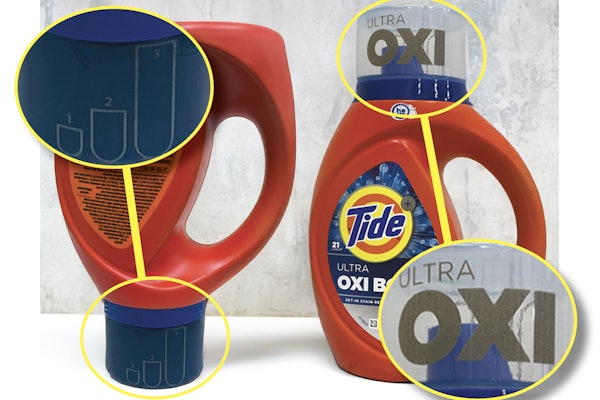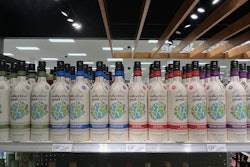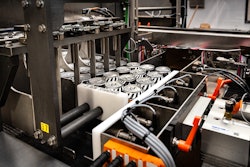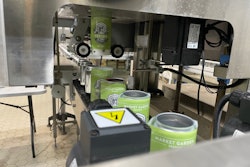Here are 12 best practices you can follow to design a flexible package that meets your product’s marketing and production requirements now and in the future:
1. Define all the requirements. Many consultants and converters alike still find this step to be a stumbling block. Define not only the objectives and parameters for performance and cost for the package itself, but also the equipment angle. Common parameters include barrier properties, package style limitations, format constraints, special product compatibility needs, regulatory requirements, easy-opening goals, reclosability, graphic impact, and printing method. Is it going to be packed in one plant, or on six lines on machines from three different manufacturers in two plants hundreds of miles apart? Knowing all the requirements can help you engineer the best structure both for today and for the future.
2. Understand all the product protection needs. Just saying you need a six-month shelf life is not enough. Know what will compromise the product the most in those six months. Will it be oxygen, moisture, or light? Moreover, when determining shelf life, don’t overlook the distribution environment. Will you be shipping at high altitudes? Does the supply chain subject packages to extremely hot or cold temperatures? ...high humidity?
...very dry conditions? As more products receive broader distribution, packagers need to be aware of all the possible impacts. Confirm how many times your packaging will be “touched” from your packaging line through your supply chain to store shelves.
3. Understand the total system costs. Don’t focus on the cost of the roll of film. Determine the total cost to get a salable product to the consumer. Switching to another structure that saves a few dollars on film costs will cost you more if it causes rejects and leakers during production. This can have particularly dire consequences if you’re producing product at full capacity, because you take a double hit for every failed package—on product cost and on lack of profit from selling that package. Substituting higher-performance materials, such as ionomers or copolymers, can replace commodity polyethylene as the sealant layer, maintain desired stiffness, reduce leakers, and enable faster sealing speeds.
4. Coordinate all suppliers and converters. Early in the process, meet with your converter and form/fill/seal equipment manufacturer (and contract packager, if appropriate) to coordinate a flexible packaging specification that plays to everyone’s strengths. This is better than independently imposing a predetermined spec. If you have a package with more stringent requirements, also include the converter’s upstream raw material provider. Such up-front coordination and open discussions can optimize production and help avoid problems, especially with newly developed material structures.
5. Match the material to the machine. Because the machine should be designed to run at specified speeds and efficiencies, the material must perform at the same specifications. Often a material has been optimized for current equipment but will not perform the same on new equipment, especially as newer equipment is generally rated to perform at higher outputs. Involving the material supplier early can eliminate any packaging performance issues and allow time if modifications are required.
6. Budget time for review and modifications. Don’t expect quick fixes to be cost-effective. It’s better to have a measured, well-documented approach illustrated by these “Three Rs”:
• Review engineering drawings. Ensure that they match the actual machinery. Manage modifications using Critical-to-Quality, Critical-to-Function, and related methods consistent with an accepted quality management program.
• Risk assessment documentation. Understand, document, and update safety requirements that apply to your new installation, as well as problems that can arise if safety issues aren’t addressed in an effective, timely manner.
• Read the fine print of all documentation. Contracts and engineering drawings are critical documents. Account for unexpected snags and the means of resolving them to keep your operation, service, and supplier relationships on track.
7. Assess existing packaging lines. Sometimes, small changes on the packaging line or in the distribution environment can enable the use of less or thinner materials in the package itself. It could be something as simple as the types of rails used in a conveyor system, or ensuring they’re maintained properly so there are no sharp points, or properly maintaining packaging machines with regular cleaning and aligning of the seal jaws to improve seal consistency and minimize temperature and pressure requirements.
8. Track cumulative variances for better machinability. The issues that can cause jams and related problems vary with the application. But it’s critical to define tolerances and add up the effects of variances, such as in film feed, label application, or other factors. One isolated variance may not impede efficiency, but several can cumulatively conspire to foul up a machine or line.
9. Investigate consolidation opportunities. If you have four flexible package structures that are fairly similar, consider using a single structure for all of them. One or two may be overengineered, but you may end up saving money due to economies of scale. Also assess with your film supplier the impact on film costs of a slightly shorter or narrower package, and smaller or different seals. The savings are sometimes surprising.
10. Look at flexible packaging as part of a system. Don’t overlook opportunities to save a few dollars by minimizing secondary packaging waste. Learn about the exact conditions your package will be subject to, and the secondary packaging’s role at each step. Will the package be used mostly in retail-ready situations? Sometimes spending a bit more on a thicker corrugated shipper can net you savings by enabling the use of a thinner package structure.
11. Schedule a plan for optimization. Often with a brand-new flexible package, the structure is overengineered to prevent failures or surprises in the field, and the package is larger than it needs to be to provide tolerance with the equipment. But it’s equally common to move on to the next project, with little time or thought given to optimizing that structure—until a sudden cost-cutting directive from above causes a mad scramble at the supplier to suddenly cut costs or risk losing the business. To avoid this scenario, build a plan for optimization up front. Either plan to optimize the package as soon as it’s out in the field and performing well, or schedule periodic reviews six or 12 months down the line. That way, both the packaging department and the supplier have a known timetable with which to work toward optimizing the package structure.
12. Root out waste for efficiency and sustainability. Examine every aspect of your new flexible package, and the process behind it, to reduce waste. Doing so can simultaneously reduce costs and improve sustainability. For example, optimize overengineered packages whose added material provides no added value. Likewise, root out machinability issues, inefficiencies during changeovers, and, broadly, all wasted time, labor, energy usage, and materials. Having to discard lengths of film or boxfuls of labels that weren’t run properly through the line will do no good for the environment or your bottom line.
Liked this article? Download the entire playbook here.
